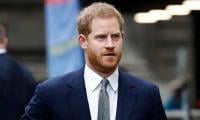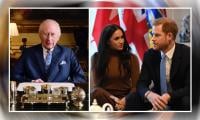Pakistan’s early childhood education crisis
A case study of Punjab province
LAHORE
Punjab is Pakistan’s most populous province with an estimated population of over 90 million—half of the country’s total population. Punjab is often ranked higher than other provinces and federating units in terms of education policies, opportunities and school infrastructure etc.
In its latest “Pakistan District Education Rankings 2016” Alif Ailaan—a DFID funded campaign that ‘seeks to put education at the front and centre of public discourse in Pakistan’—observes Punjab continues to dominate the top of the ranking table as six of its districts are in the top 10 districts of the country. These rankings measure performance on access, learning, retention, gender parity and educational inputs, including basic school level infrastructure.
According to Pakistan Economic Survey 2015-16, Punjab province has the highest Net Enrolment Rate (NER) at primary level (61 percent), highest literacy rate (63 percent) while its Gross Enrolment Rates (GER) at primary level (97 percent) is also the highest in Pakistan.
Quoting the year 2015, Annual Status of Education Report (ASER)—the largest citizen led household based learning survey — Pakistan Economic Survey reveals Punjab has the highest enrolment (53 percent) in pre-primary age group too. As per the State of the World’s Children 2016, there are some 24 million under age of five children in Pakistan.
However, there is no separate early childhood (pre-primary) institution in public sector of the country, including Punjab. Also, there is no separate Early Childhood Education (ECE) policy at the national level.
Why ECE is important?
There is a plethora of research studies about the importance of early childhood development. In addition to proper nourishment and care, education lies at the heart of this development process.
Education has rightly been termed humanity’s best hope, so some link ECE with peace building; others term it crucial for sustainable development.
A brief “Early Childhood Programme Effectiveness” by the Centre on the Developing Child at Harvard University notes that education and development investments in the earliest years of life produce the greatest returns.
Prof Hafiz Muhammad Iqbal, who served as Dean Faculty of Education at Punjab University for several years, agreed and said it had been confirmed on the basis of empirical data that the emotional, social and physical development of young children had tremendous effect on their overall development and their later success in life.
The Harvard University’s brief—part of a series that summarises essential scientific findings from the centre publications—also notes some effectiveness factors which improve outcomes for children in early care and education and these factors include qualified and appropriately compensated personnel (teaching and other staff), language-rich environment, safe physical setting and development-based appropriate curriculum etc.
Challenges
After Pakistan got independence in 1947, the ECE has; however, been part of every National Education Policy (NEP), including the latest in the series which was introduced in 2009. However, implementation of these policies remained a challenge ever since the first policy.
“The policy actions envisaged in National Education Policy 2009 relating to Early Childhood Education i.e. additional budget, separate teachers for ECE, imparting of two-year specialised training and revision of ECE national curriculum have not been implemented; however, only ECE classes have started in a few schools in the provinces,” reads findings of a research study.
The study “Implementation Status of National Education Policy 2009” was conducted by the Academy of Educational Planning and Management (AEPAM), Pakistan during 2014-15 and released in March 2016. AEPAM is the federal government’s prime institute in the field of education planning and management.
So, how has the public sector been providing kids with pre-primary education over the years in Pakistan, including Punjab? Traditionally, there is a section within a government-run school where children of age three and four are enrolled in pre-school or Kachi (-1) and Pakki (00) classes. On top of that not all public schools offer these pre-primary classes. There are no specially designed classrooms for these young learners nor do they have teachers trained in early education.
Now this is understandable as Pakistan introduced first and separate ECE national curriculum in 2002. There is no separate allocation of teachers to the pre-primary level in the public sector; hence the AEPAM data does not reflect their numbers either.
However; it does share data on enrolment at pre-primary level in the country. According to Pakistan Education Statistics 2014-15, issued earlier this year, there are total 8.635 million children at pre-primary stage in Pakistan, out of which 4.6 million are enrolled in public sector schools while over four million children in private.
The latest economic survey estimates pre-primary enrolment in Pakistan to 9.61 million during 2016. However, both the documents are silent about province-wise break-up of the enrolment at this level.
Pakistan being a signatory to Education for All (EFA) goals was supposed to expand and improve “comprehensive early childhood care and education, especially for the most vulnerable and disadvantaged children” by 2015 but above-mentioned statistics clearly show the successive governments’ (including Punjab’s) response to this vital international commitment.
The Millennium Development Goals (MDGs) and EFA goals have come to the end of their term and new Sustainable Development Goals (SDGs) are in place now. The SDG No.4 pertains to education and its target 4.2 reads “By 2030, ensure that all girls and boys have access to quality early childhood development, care and pre-primary education so that they are ready for primary education”.
On the other hand, some schools in private sector have a well-established ECE and Early Childhood Development (ECD) system, almost everywhere in Pakistan, including Punjab. One such example is a private school which secured the master franchise for Gymboree in Pakistan in 2010. Having presence in 40 countries, “Gymboree Play & Music has been fostering creativity and confidence in children ages 0-5 for over 40 years.”
But a country like Pakistan where one-third of people live below the poverty line and per capita income stands at USD 1,560, this is quite obvious majority don’t have access to an expensive ECE and ECD system. It has; therefore, become inevitable for the majority to look towards only public sector.
It is in this backdrop the recent strides in the ECE by the Punjab government have attracted everyone’s attention.
The beginning of a new era
It was only in 2013 when the Punjab government started mainstreaming the ECE in the province’s public sector schools by developing Early Childhood Education strategy with the support of UNICEF.
Under this strategy, “ECE Whole District Approach” was adopted and ECE classrooms were established in 300 public schools of district Toba Tek Singh in 2015. Having received a huge response, the provincial government went ahead with the programme and established more ECE classrooms with special pre-primary kit designed by National Educational Equipment Centre (NEEC), Lahore.
Each of these ECE classrooms has a dedicated teacher and a care-giver while the room comprises different corners such as language and literacy corner, mathematics, science, geography and art and activity corners.
Secretary School Education Department, Punjab, Abdul Jabbar Shaheen said 1,250 ECE classrooms have so far been established in different parts of the province. “Our target is to establish 5,000 ECE classrooms by next year and double the number by 2018”, he said. According to him, the ongoing project of establishing additional classrooms in public schools will also prove helpful vis-à-vis furthering the access of ECE opportunities across the province.
Punjab School Education Minister Rana Mashhood Ahmad Khan said the assessment of ECE pilot project in Toba Tek Singh had shown significant improvement vis-à-vis enrolment in primary schools while the retention of students had also improved.
“The Punjab government will recruit 82,000 teachers by 2017 which is over and above the 40,000 teachers under the recruitment process”, the minister said, adding this would address the issue related to non-availability of teachers for pre-primary and primary schools.
Prof Iqbal, who pursued post-doctoral studies in the field of educational/cognitive psychology, from University of Texas at Austin, said under the new SDGs, the target 4.2 had been set because of the importance of early childhood education for later development of the child as an adult.
“Those children who do not have good experience at early childhood education are more likely to drop at very early years of schooling or will show minimal achievement if they survive at all”, he said and added “while out of school children need to be brought in, it is equally important that those already enrolled at early primary and pre-school levels are provided enriched environment and joyful experience not only to prevent them from being out but helping them to succeed at later stage of their learning and adult life.”
Prof Iqbal, who retired from Punjab University and now serves at the University of Dammam, Saudi Arabia, appreciates the Punjab government’s ECE initiatives. He urged the government to speed up efforts vis-à-vis provision of ECE opportunities. He said “This should not be only because of the 2030 SDGs related deadline but the tremendous impact of early education on children.”
-
 ‘Entitled’ Andrew Mountbatten-Windsor Is Still Winding People Up: ‘That’s What He’s Used To’
‘Entitled’ Andrew Mountbatten-Windsor Is Still Winding People Up: ‘That’s What He’s Used To’ -
 Why Sarah Ferguson Will Not Leave Andrew Despite Ultimate Humiliation
Why Sarah Ferguson Will Not Leave Andrew Despite Ultimate Humiliation -
 Sylvester Stallone Stuns Internet In New Video
Sylvester Stallone Stuns Internet In New Video -
 Sophie Turner Talks About ‘nesting’ In Early 20s: ‘Big Break’
Sophie Turner Talks About ‘nesting’ In Early 20s: ‘Big Break’ -
 Brooklyn Beckham Claims Family Blocked Him First In Bombshell Statement
Brooklyn Beckham Claims Family Blocked Him First In Bombshell Statement -
 Sarah Ferguson Resorts To A Cynical Attempt At Survival And Runa Out Of Lives
Sarah Ferguson Resorts To A Cynical Attempt At Survival And Runa Out Of Lives -
 Nicole Kidman 'calm' And Focused After Keith Urban Split
Nicole Kidman 'calm' And Focused After Keith Urban Split -
 Prince Harry Deserves UK Security: ‘Didn’t Choose His Fate’
Prince Harry Deserves UK Security: ‘Didn’t Choose His Fate’ -
 Brooklyn Beckham Goes Public With His Side Of The Story Amid Feud With Family
Brooklyn Beckham Goes Public With His Side Of The Story Amid Feud With Family -
 Sarah Ferguson & Andrew Turn Volatile And Makes Buckingham Palace’s Biggest Fear Come True
Sarah Ferguson & Andrew Turn Volatile And Makes Buckingham Palace’s Biggest Fear Come True -
 Meghan Markle’s Laundry List Of Demands Finally Gets Answer By King Charles?
Meghan Markle’s Laundry List Of Demands Finally Gets Answer By King Charles? -
 Brooklyn Beckham Finds It 'hard' To Keep Contact With Sister Harper
Brooklyn Beckham Finds It 'hard' To Keep Contact With Sister Harper -
 New Mystery About 'Ring Nebula' Shock Astronomers: Here's Why
New Mystery About 'Ring Nebula' Shock Astronomers: Here's Why -
 Prince Harry Picks PR Photos In Fear Of ‘bald Spots’
Prince Harry Picks PR Photos In Fear Of ‘bald Spots’ -
 Saying Prince Harry Will ‘probably Be Fine Isn’t Good Enough’, Expert Speaks Out
Saying Prince Harry Will ‘probably Be Fine Isn’t Good Enough’, Expert Speaks Out -
 Inside Meghan Markle’s Plans ‘With Love, Meghan’: Season 3 And Valentines Day Specials
Inside Meghan Markle’s Plans ‘With Love, Meghan’: Season 3 And Valentines Day Specials



